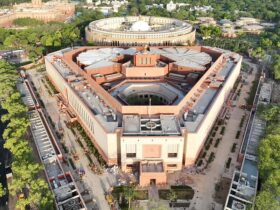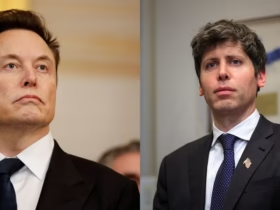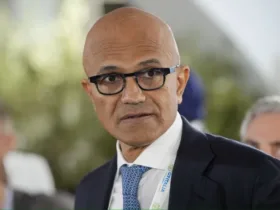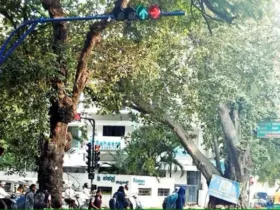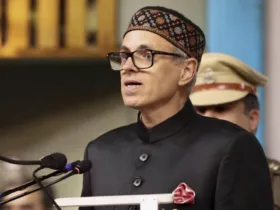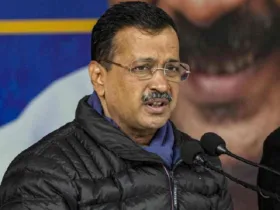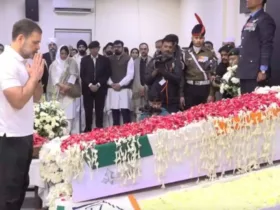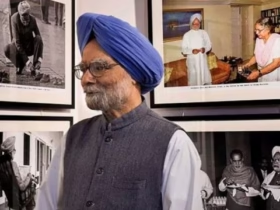On December 17, 2024, India’s Finance Minister Nirmala Sitharaman provided an update in the Lok Sabha (the lower house of Parliament) regarding the recovery of assets linked to fugitive businessmen involved in major financial frauds. Sitharaman highlighted that a significant amount, approximately ₹22,280 crore, had been returned to legitimate claimants, including public sector banks and defrauded investors, following the sale of assets tied to individuals like Vijay Mallya, Nirav Modi, and Mehul Choksi.
Recovery of ₹14,000 Crore from Vijay Mallya’s Assets
One of the most notable recoveries discussed by Sitharaman was from the assets of fugitive businessman Vijay Mallya, whose Kingfisher Airlines defaulted on loans leading to a massive financial scandal. Mallya, who fled India in 2016 to avoid prosecution for charges related to financial mismanagement and loan defaults, had assets seized by Indian authorities in an effort to repay the banks.
According to Sitharaman’s statement, the Enforcement Directorate (ED) has successfully sold Mallya’s assets, with proceeds amounting to over ₹14,000 crore being returned to various banks. This marks a significant achievement in the recovery process, which has been ongoing for several years. The money returned to the banks will help mitigate the losses incurred from Mallya’s default on loans, further strengthening the government’s efforts to pursue accountability in financial fraud cases.
The Role of the Enforcement Directorate (ED)
The Enforcement Directorate’s role in seizing and liquidating Mallya’s assets has been pivotal in the recovery process. For more information on how the ED works, you can visit the official Enforcement Directorate website.
Nirav Modi’s Fraud and Asset Recovery
In another high-profile case, Sitharaman revealed that assets linked to Nirav Modi, an accused in the ₹13,000 crore Punjab National Bank (PNB) fraud, had also been sold, with ₹1,052.58 crore returned to public and private sector banks. Nirav Modi, who fled the country in 2018, allegedly masterminded the fraudulent issuance of Letters of Undertaking (LoUs) from PNB, leading to one of India’s largest banking scams.
The recovery of assets from Nirav Modi is part of a broader effort to bring back the stolen wealth and ensure that the financial institutions affected by the frauds are compensated. The ED has been working closely with international authorities to track and seize Modi’s assets, which include luxury properties, jewelry, and artworks located across the globe.
International Cooperation in Asset Recovery
India has been working with international law enforcement agencies to recover assets from fugitive businessmen. The collaboration with agencies such as Interpol has been instrumental in tracking Modi’s properties worldwide. Learn more about international asset recovery at Interpol’s Economic Crime Division.
Mehul Choksi’s Case and the Role of Special Courts
The ED’s efforts were also extended to the assets of Mehul Choksi, a business partner of Nirav Modi, involved in the PNB scam. Choksi, who also fled India, had been involved in the fraudulent activities and had assets seized by Indian authorities.
In collaboration with the banks, the ED has moved a special court in Mumbai to seek permission for the sale of Choksi’s assets. The special court granted approval for the valuation and auction of seized properties worth ₹2,566 crore. The proceeds from the sale are intended to be deposited into fixed deposit accounts of Punjab National Bank (PNB) and other creditors. This move underscores the government’s proactive stance in pursuing economic offenders and ensuring that their ill-gotten wealth is used to repay victims.
India’s Legal Framework for Financial Crime Control
India’s legal framework is evolving to address financial crimes more effectively. For more details on India’s laws surrounding financial fraud, visit the Ministry of External Affairs website.
Broader Implications and Government Efforts
These actions are a part of the Indian government’s ongoing efforts to combat economic offenses, particularly cases of banking fraud and financial crimes. The sale of assets and recovery of funds highlights the government’s commitment to ensuring that assets acquired through illegal means are returned to their rightful owners—namely, the banks, which are institutions representing public interest.
Sitharaman emphasized that the ED’s efforts are aimed at sending a strong message to economic offenders and ensuring that the rule of law is upheld. The success of these actions also reflects the government’s determination to not only pursue financial criminals within India but also to work with international authorities to track and seize assets across borders. This is particularly important in cases where the accused have fled the country to evade justice.
Strengthening India’s Financial Security
The government’s strategy includes tightening the oversight of banking institutions and enhancing the capacity of the ED and other investigative agencies to handle complex financial crimes. It is also focusing on improving the financial regulatory environment to prevent such crimes in the future.
Broader Impact on Financial Crime Control
The sale of assets from Mallya, Modi, and Choksi, and the subsequent return of funds to the affected banks, forms a key part of the broader effort to reduce financial crime in India. These cases have captured public attention due to their scale and the involvement of prominent figures in the business and banking sectors.
While the recovered funds help banks mitigate losses, the recovery process also serves as a deterrent to other potential economic offenders. By demonstrating that the government is actively working to trace, seize, and sell the assets of fugitives, the authorities aim to make it more difficult for individuals involved in large-scale fraud to evade justice.
Improving Trust in India’s Financial System
Furthermore, the recovery also aids in rebuilding trust in India’s financial system. The willingness to hold powerful individuals accountable helps foster an environment where financial institutions can operate with greater confidence, knowing that there are mechanisms in place to address fraud and financial mismanagement.
Conclusion
The return of ₹14,000 crore to banks from the sale of Vijay Mallya’s assets, along with similar recoveries from Nirav Modi and Mehul Choksi, marks a significant step forward in the Indian government’s efforts to combat financial crime. The successful sale of these assets underscores the effectiveness of India’s enforcement agencies, including the Enforcement Directorate, in tracking and recovering ill-gotten wealth.
These developments not only serve as a win for the banks and investors who have been defrauded but also send a strong message to economic offenders. With authorities continuing to target financial criminals and their assets, the government’s actions reflect a commitment to ensuring justice for the victims of large-scale frauds. As the legal process continues and more assets are liquidated, there is hope that this will lead to further recoveries and a reduction in financial crimes, ultimately contributing to a more robust and secure financial system in India.


